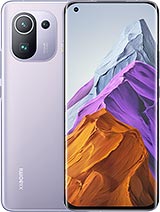Xiaomi Mi 11 vs Samsung Note 20 Ultra vs iPhone 12 Pro Max Charging Speed Test By TechNick
The Xiaomi mi 11 is finally here making its presence as the world's first snapdragon 888 powered smartphones, but the company is also known for extremely fast charging. This time around, we get 55 watt charging, which is up from the meat 10 and me 10, pros 30 watts and 50 watts respectively, but down from the 120 watt meter, ultra Xiaomi also seems to be following in apple's footsteps by not including the charger or even the cable in the box. However, they do give you an option to get a free, 55 watt, gallium nitride charger in a separate box. The 11 goes up against the Samsung Galaxy note, 20 ultra with a 4 500 William hour, battery cell and 25 watts fast charging Samsung decided to skip out on the 45 watt capabilities that we saw in the as20 with the note 20, and it is completely capped at 25 watt wide charging up. Next, we have the iPhone 12 Pro max, which has been increased from 18 watts to 20 watts. However, this year around, we don't get a charger included in the box like we saw with the Xiaomi, and we have a slightly smaller battery compared to the 11 pro max at 3687 Williams, I'm extremely excited to see how Xiaomi's new take on charging using gallium, nitride and 55 watt capabilities with a slightly larger battery can compete against the quick charging note 20 ultra and the slightly sluggish iPhone 12 Pro max.
This is technique and without further ado, let's go before we get going with the charging speed test. Let's check out the temps when they're all powered off at the current point in time and not plugged into charge they're all sitting around room temperature of about 21 to 22 degrees Celsius hitting start at the phone on the right hand, side. The time interval is above it and the relation to that time interval is the percentage above each device. I have made sure to disable all charging optimizations on all devices. It is lacking on Xiaomi and Samsung.
Over here we have battery optimizations for the iPhone, which I have made sure to disable. After five minutes we have ninety percent. On the Xiaomi nine percent on the Samsung and seven percent on the iPhone, the Xiaomi hit 38 after just 10 minutes, which is pretty incredible, 19 for the Samsung and 16 on the iPhone, with the iPhone being the coolest in terms of interval and peak Nisha being the hottest in terms of instable and peak after 15 minutes, we have 54 on the Xiaomi 27 on the Samsung 24 on the Apple iPhone 12 Pro max, not far behind the Samsung overview, even though it has a slightly slower wattage charging. It does have a much smaller battery and the Samsung has a battery just a tad smaller than that of the Xiaomi. The Xiaomi is the hottest now with 45 degrees in Celsius.
At the interval, its peak was 51.6 degrees Celsius. The iPhone was still the coolest. After 25 minutes, we have 65 on the Xiaomi mi 11 43 on the Samsung and 41 on the iPhone with the Xiaomi, taking a huge turn now with the lowest interval at 41.1 degrees in Celsius, really starting to cool down already, and you'll, see why? Now? In a second? After just 31 minutes, we have 70 from the Xiaomi 52 on the Samsung 2, behind that the iPhone with 50 the iPhone is now hitting the hottest interval here with 44.5 degrees Celsius. The Samsung is not the coolest peak with the Xiaomi, still the hottest peak, and we're nearing the next interval, which is the 45 minutes mark interval, going into that one 83 on the mi 11. As you can see, the charging has slowed down a significant amount.
I have checked numerous amount of times if there is charging optimization within the phone itself and there isn't I'll show you in a sec, it's really strange to see, but it is cooling down a lot, so it seems like Xiaomi is actually trying to prevent the battery from overheating too much, especially with the gallium nitride charger, since it uses less energy, and it is more efficient. So maybe that's one of the reasons why it's charging slightly slower. Here it is, as you can see, there is no charging optimization options on the phone within the settings at all whatsoever and after an hour we are 95 which is actually slow for Xiaomi terms.88 on the Samsung 84 on the iPhone, which are actually catching up quite a bit, and after one hour and nine minutes, the Xiaomi mi 11 finally fills up its tank from zero to 100, which honestly is still pretty fast charging not the fastest I've seen around. But we got 50 percent in just 13 minutes. So in theory, this should fully charge in 26 minutes, which means that its current is dropping significantly.
After its first 50, we got a William hour per minute, reading of 176.92 on the Xiaomi's first 50 and then 66.67 for the full charge. The Samsung just clocked out now at 1 hour and 17 minutes, and we have a William hour per minute. Reading of the Samsung at 58.44 and the first 50 percent in 29 minutes and 77.59 William per minute within its first 50. So the Xiaomi was significantly quicker than the Samsung in the first 50, pretty much half the time, but it was pretty much neck and neck. Just an eight-minute difference between the two devices overall since Xiaomi slowed a hell of a lot down, meaning that the Samsung kept its currents more accurate.
Most of the time we do have the iPhone optimization off over here, and this is the longest it's taken to charge up the iPhone 12 Pro max on my channel with an hour and 56 minutes up from an hour and 39. In its last charge, we got 31.78 William per minutes this time around and 61.45 in its first 30-minute charge where it reached 50 percent third place. We have the iPhone 12 Pro max with almost two hours one hour, 56 minutes with the smallest battery at 3687 Williams and the smallest wattage block at just 20 watts, second place the Samsung Galaxy note, 20 ultra an hour and 17 minutes slightly slower than the previous test. I ran with this 25 watt charging 4 500 William hour battery pretty much slapping in the middle of the two devices over here. The biggest battery 4 600 William hours and the biggest charging block 55 watt is the mi 11, which crowns first place here with an hour and nine minutes slow for Xiaomi standards, but still quicker than the other devices here, which cost twice the price.
Now it's very interesting if you take the Xiaomi mi 10 ultra into accounts, which only released a couple of months back that comes paired with 120 watt charging block in the box a slightly smaller battery by just 100 Williams, and it fully charged in 31 minutes, but it does have more than double the wattage block of the mi 11, though android authority stated that it hovered around 80 90 watts. So if that was the case with the mi 10 ultra, then I'm guessing we're sitting at around 30 watts. For the 11. , we also got the first 50 of the mi10 ultra at 10.5 minutes, which is almost identical to the 13 minutes of the 11, so they're actually really, really fast, both of them in its first 50 of juice, but the mean 11 slowed down significantly in the last 50. I hope that you guys enjoyed watching this video as much as I did.
Making it a sub of the channel would be absolutely phenomenal. This is tech, nick and I'll, see you in the next one. You.
Source : TechNick


























